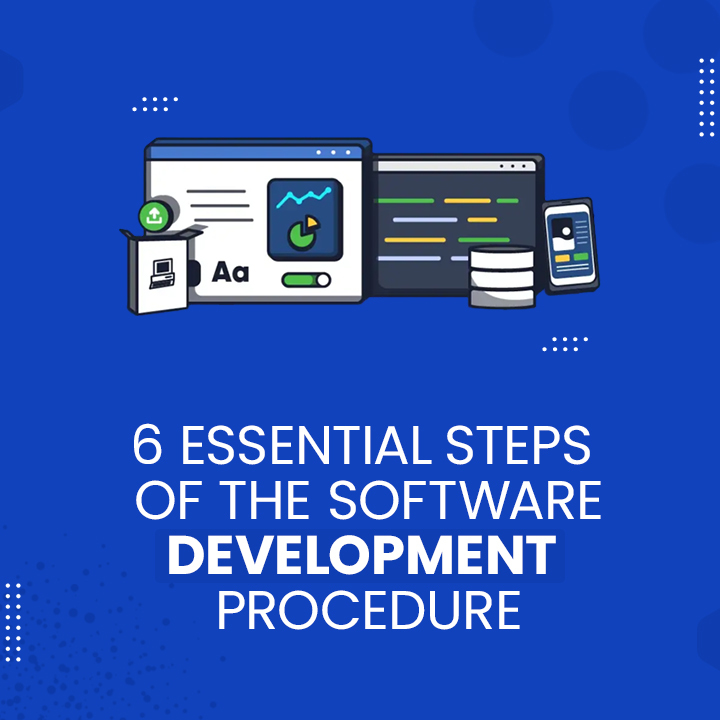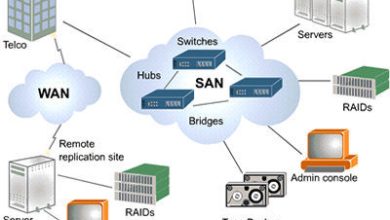6 Essential Steps of the Software Development Procedure

The Software Development Life Cycle helps developers develop software more methodically, allowing them to address every aspect of creating successful software. The process of software development is vital because it gives developers the ability to control their work and lets them efficiently manage the process of growth and management at a higher level. It also minimizes the chance of project failure as developers can simultaneously fix their errors during the process. Therefore, it is essential to understand each phase in the SDLC, and it is crucial to follow the lifecycle every time you build an application. This article will go over the six steps of the software development cycle. We hope you will stay until the close.
Six Stages of Software Development:
1. Planning and Requirements Gathering:
You must have as much information as you can collect about the project you’re going to manage. The gathering of requirements is a crucial stage use to determine how the product will appear and function. This step is likely to be the one that takes a long because there will be lots of switching between the project director, the business analyst, and the customer. Customers are required to answer open-ended questions to get all the information they can give. There are plenty of opportunities to conduct this during your regular communications or business conferences.
When collecting data, it is imperative to emphasize identifying the intended users and the purpose of the product. Understanding the necessity of the software and its usage will give you a more extraordinary view of the overall project. The most important thing is that you have to understand the issue the product is trying to solve.
2. Stage-Wise Performance Analysis:
The next step is evaluating the performance of the software or program for various features. This stage lets developers find issues and make adjustments for the following phases in the SDLC. The main objective of this stage is to make sure the software operates in the right way. You’re conducting an analysis of your software that will allow you to investigate and then implement the non-functional and functional needs. To do this effectively, you must make effective timelines for the project and the scope.
This stage allows developers to spot significant software flaws and work to eliminate any weaknesses in the design and development of the program. After this phase, you will be capable of creating a Software Requirement Specification (SRS) that allows you to develop and build the software according to the specifications.
3. Designing Software Foundation:
Once you have the SRS, you can now move on to the next step in the SDLC. The third step is the one that is dedicate to the design and design of the software. As you’ve got all the technical specifications, it becomes more straightforward for you to present various design strategies to the client by putting them into a DDS (or Design Document Specification.
There are two primary designs, namely low-level design and high-level design. As the name implies, high-level design is the one that covers the whole database and system architecture. The high-level design allows you to understand the complete flow of the system’s architecture.
Low-level design, on the contrary, can help how you can implement the specifications of the program. After you’ve completed making the DDS, you can pass it to your clients to hear their opinions. After that, you select the method of design that best suits your needs.
4. Software Implementation:
The next phase of the process is executed. Software implementation is creating the code, testing it, and then integrating it, which is the longest stage of the whole SDLC.
The process takes a significant amount of time because most of the development work is completed in this phase.
To be more efficient in software implementation, developers generally break down the development process into manageable parts and then accomplish the step-by-step goals. However, implementing it is contingent on the model of development you’ve chosen in your plan.
5. Software Testing:
As the name implies, software testing is the process of testing software for errors and bugs. That is an essential part of the SDLC because it is committed to eliminating ineffective bugs, code, and mistakes when you are trying to develop the perfect software. Software testers typically utilize four kinds of testing: unit testing, Integration testing, acceptance testing, or system test. As mentioned before, developers usually break the entire project down into manageable components.
Each module is examine individually and then passed through various testing phases to ensure that the software is ready. That includes testing the program behind closed doors and conducting tests to collect the performance information. That also lets developers note the issues encountered during the project.
6. Deployment and Maintenance Checks:
The final phase of this life cycle is software deployment. In this phase, the software is created to be released into the market. To make the implementation more efficient, the customer is asked to provide feedback on the software and suggest any needed changes.
The software can released after all required changes have implemented and checked for functionality. When the software begins to run, developers must periodically monitor for maintenance to ensure the smooth operation of the program at the users’ end. The team working on the project continues to come up with new software updates and ensures that the program can meet the market’s demands.
Final Thoughts:
The development of software is a continuous process. That means you’ll always need to look after your software and invest in resources to ensure its flawless running. It permits business owners and Software developers to consider their options between the benefits and the cons of various possibilities, timeframes, and costs to find an efficient and secure solution.





